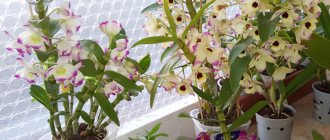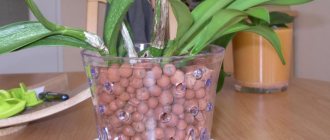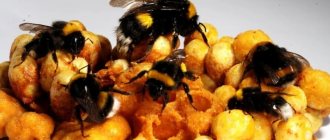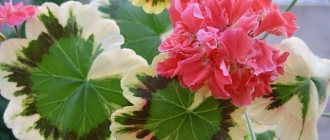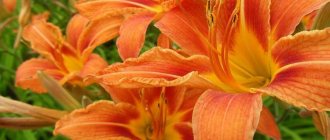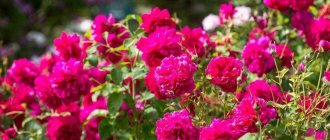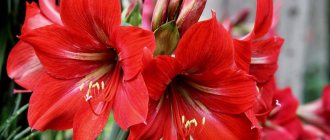Author: Alexey Streltsov Category: Partners Published: December 30, 2019Last edits: July 22, 2020
Many of our clients ask the question: how to grow orchids?
Growing orchids is a very difficult process, both for amateurs and professionals. Orchids react sharply to changes in temperature, light, and moisture coefficient. They also have special needs for aeration and microelements.
The most important factor for growing orchids is the substrate. And we suggest using Orchiata as a substrate.
Orchiata is an ideal substrate for growing and propagating orchids. It provides a natural environment for orchids and offers many growing benefits.
- Onion skins are an easy way to add a sweet taste to vegetables.
Orchiata is produced by Besgrow. This New Zealand company is a professional in the production of orchid substrates. In addition to orchiata, they also produce Spagmoss - pressed sphagnum moss, as well as panels made of tree fern.
Orchiata is made from chips of the bark of the radiata pine (Pinus radiata). The pines for this substrate are grown in private, controlled forests. Therefore, the entire product line is made from sustainable and renewable resources.
Basic properties of Orchiata
Orchiata produces a high quality, toxin-free substrate, available in a variety of grades to suit specific needs.
Orchiata is distinguished not by the fact that it is the bark of a special pine tree, but by its manufacturing technology. Orchiata is fermented by bacteria and fungi.
Orchiata has a number of advantages:
- Stability under different influences and temperatures;
- Does not rot in pots for many months;
- Prevents pathogenic bacteria and fungi from multiplying;
- Creates favorable conditions for the proliferation of beneficial microflora;
- Maintains wet-dry cycle;
- The bark has roughness, which creates conditions for retaining moisture and nutrients, as well as for strengthening the roots;
- Good aeration of the roots, due to the fact that after watering the orchiata does not bunch up;
- Balanced pH level.
Sphagnum moss as a substrate for orchids
Orchid pot - which one is better to choose?
Flower growers are constantly arguing about the use of this material as a primer for orchids. It has its pros and cons.
Benefits of sphagnum (peat) moss:
- The presence of sphagnol - a phenolic compound with bactericidal properties. This substrate will be sterile, which is what is needed for growing orchids.
- The ability to accumulate and store moisture. Water in sphagnum is distributed evenly.
- Moss can be used both fresh and dried, its properties do not change.
- The sphagnum soil is good, light and loose, which is optimal for epiphytes.
- When water evaporates, magnesium and calcium salts are deposited on the surface, which prevents the flower from developing normally. Mulching with sphagnum prevents rapid salinization of the substrate.
The negative aspects of the material appear only when it is used incorrectly.
Disadvantages of sphagnum as soil for orchids:
- Insect pests can develop in moss that is not sufficiently dried or that is waterlogged.
- The material decomposes quickly. It needs to be changed at least 2 times a year.
- After some time, the moss may become compressed. In this form, it makes it difficult for oxygen to reach the roots of the plant.
- Dry sphagnum moss can absorb 20 times its volume of water. This makes it difficult to calculate the irrigation fluid.
Sphagnum moss
Important! Pests thrive in sphagnum, so before use it is either scalded with boiling water or soaked for a long time.
Line of ready-made substrates
Orchiata Precision, 3-6 mm
Mainly used for orchid seedlings and orchids in flasks. AFP (air permeability) 43-50%, WHC (moisture capacity) 52%.
Orchiata Classic, 6-9 mm
For young orchids, a good fraction for a second pot growing. AFP 47-52%, WHC 55%.
Orchiata Power, 9-12 mm
For young and mature small orchids, a good fraction for a second pot growing. AFP 49-53%, WHC 56.8%.
Orchiata Power+, 12-18 mm
Ideal for mature orchids and orchids that require good aeration. AFP 50-54%, WHC 56.8%. Most often it is chosen for phalaenopsis.
Orchiata Super, 18-25 mm
The largest faction. Ideal for large mature orchids and orchids that require more air to the roots. AFP 51-55%, WHC 56.8%.
Orchiata series of substrates
Orchiata Precision is a substrate with a fraction size of 3-6 mm. Used for seedlings of orchids of the smallest size. The air permeability rate is 43-50%, the moisture capacity rate is 52%.
- Do-it-yourself EM container - making a cheap compost container yourself
Pictured: Orchiata Precision
Orchiata Classic is a substrate with a fraction size of 6-9 mm. They are most often used for young orchids and when transplanting into a wider pot. The air permeability rate is 47-52%, the moisture capacity rate is 55%.
In the photo: Orchiata Classic
Orchiata Power is a substrate with a fraction size of 9-12 mm. Used mainly when transplanting into a new pot. The air permeability rate is 49-53%, the moisture capacity rate is 56.8%.
Pictured: Orchiata Power
Orchiata Power+ is a substrate with a fraction size of 12-18 mm. Used for already mature orchids and for species that grow well with maximum aeration. Most often, this species is added to phalaenopsis. Air permeability index 50-54% moisture capacity – 56.8%.
In the photo: Orchiata Power+
Orchiata Super is a substrate with a fraction size of 18-25 mm. Used for the largest orchids. The air permeability rate is 51-55%, the moisture capacity rate is 56.8%.
In the photo: Orchiata Super
Application
You need to take the largest fraction 18-25. This bark is suitable for use both in adult plants and in a mixture with moss for teenagers.
From it you can choose a smaller fraction for teenagers and a larger fraction for adult orchids. If it’s just for adult orchids, then you don’t need to sort through anything. This fraction is suitable for almost all orchids.
Do not soak Orchiata in boiling water!
Orchiata is sold dry, so it is necessary, like any other bark, to be soaked in water at room temperature for 4-5 days before planting the orchid.
Composition of soil for orchids: mix the components
You can make soil for orchids with your own hands by combining several ingredients to give the composition certain properties.
Bark – component No. 1
Cut pine or spruce bark is usually used as the base of the substrate. It has excellent drainage properties and allows air to circulate freely around the roots.
Bark is an organic material; over time, it begins to decompose and crumble into dust. Therefore, once every 2-3 years, the old bark in the pot must be replaced with fresh one.
Pieces of bark can be of different sizes:
- 3-6 mm - for seedlings and growing orchids in a flask;
- 6-9 mm - for young specimens;
- 9-12 mm - for young and mature medium-sized varieties;
- 12-18 mm - for mature ones and requiring increased aeration;
- 18-25 mm - for large mature orchids that require more air for the roots.
The rougher the bark, the faster it dries and the better it allows air to pass through.
Very often, epiphytes are grown in pure bark without using any additives. At the same time, the bark can be mixed with any of the components described below.
Sphagnum moss
Moisture-absorbing component with antibacterial properties. Accumulates and retains excess moisture, gradually releasing it to the plant. To reduce the frequency of watering, it is enough to add 5-10% moss to the soil.
It is traditional to distribute sphagnum over the soil to slow down the drying of its top layer and moisten the aerial roots of the epiphyte.
Sphagnum moss laid on top of bark substrate
Solid sphagnum moss as a substrate is used for growing baby orchids and resuscitating orchids without roots.
Sometimes healthy adult orchids are also kept in pure moss. However, it should be understood that moss cannot provide high aeration for the roots of adult plants. In combination with increased moisture capacity, this can lead to rotting of the root system. Therefore, moss as a substrate, of course, has its place, but it requires experience and is not suitable for beginners.
Coconut fiber (coir)
Made from the husks of coconut palms. Thin, moderately dense fibers ensure looseness of the substrate and air access to the root system of the plant. They absorb moisture and dry quickly, keeping orchid roots in moist but not damp conditions.
Coir ensures maximum air circulation around the orchid roots
Use: as a substrate additive or as a stand-alone medium. When growing orchids in lattice baskets, the fibers are laid on the bottom so that the main substrate does not spill out. They are also indispensable in block culture, for wrapping the roots and fixing the orchid on the block.
Coconut chips
Cut pieces of coconut, similar in appearance to bark. Very light, provide a constant flow of air to the roots. A distinctive feature is increased moisture capacity. Before use, coconut chips are filled with water, after which they increase in size by about 2-3 times.
When growing orchids in coconut chips, you should take into account their moisture capacity and carefully monitor watering, avoiding overwatering.
Coconut substrate retains moisture longer than bark
Charcoal
A medicinal component and a real savior of orchids from infections and diseases. It has antiseptic and absorbent properties that prevent the appearance of mold and fungal deposits in the plant pot.
It is used as an additive in pieces 1.5-2 cm in size. Usually used in small quantities, up to 5-10% of the total soil volume (maximum 20%).
Expanded clay
Porous, lightweight granules. They are inorganic materials, therefore they do not decompose and do not compact. They absorb water well and increase the moisture capacity of the substrate. Allows you to reduce the number of waterings and evenly distribute moisture inside the pot.
Expanded clay can be used as a component of the substrate or its only component. Often large pieces are used to form a drainage layer at the bottom of the pot.
Expanded clay can be mixed with any other components. It goes well with bark, foam glass, perlite
Styrofoam
Neutral, non-water-absorbing material. During watering, water flows over the pieces of foam without wetting them. For orchids, foam is used to form a drainage layer and as a fixative in unstable environments. Often a piece of polystyrene foam is placed under the root collar of orchids to prevent it from becoming waterlogged and rotting.
Foam glass
Crushed glass, which under the influence of high temperatures turns into a porous material.
Advantages: high level of water and breathability due to the light and moderately loose texture, neutral pH level, long-lasting storage of the material, which does not deform or deteriorate over time. The material is resistant to mold, plaque, midges and fungal diseases.
Among the disadvantages, it should be noted the roughness of the surface (in some types of orchids, if improperly cared for and replanted, damage is noted on the roots, trunk and arrows), lack of nutrients in the composition (not suitable for young orchids that are just beginning to develop and damaged plants), the need to maintain optimal humidity if the plant is located in a room with dry air.
Before use, foam glass must be soaked in water, preferably for a day.
Pumice
A light volcanic rock with high porosity. Its surface is completely occupied by pores, creating a “breathing” environment around the roots of the orchid. Moreover, the pores absorb not only air, but also water - up to 50% of the weight of pumice.
Pumice can be used as a single composition or in a mixture - with sphagnum moss or bark.
Pumice goes well with other ingredients and is often found in ready-made inorganic substrates, such as Lechuza Pon
Perlite
Material of natural, inorganic origin. Lightweight, does not decompose and does not compact. Promotes soil friability and prevents plant rotting due to improper watering (either too much water or drought).
Used as a leavening agent in peat soils for orchids or fine-grained substrates.
Seramis granules
Clay granulate of the Seramis brand. Homogeneous granules made of porous material absorb water and nutrients like a sponge. And then, gradually, they give everything accumulated to the plant. Seramis provides air flow and retains moisture in the soil, that is, it creates ideal conditions for growing orchids.
The granulate can be used as an independent substrate or mixed with other suitable components, for example, bark.
Seramis is an innovative clay granule from the German manufacturer Westland Deutschland GmbH
To make it easier for you to decide on a set of components, watch a video with an overview of the organic and inorganic components of soil for orchids:
The most popular purchased substrates and soils
Seramis for orchids are small clay granules with bioadditives (phosphorus, potassium and nitrogen). Those. both soil for orchids and fertilizer at the same time. The composition of the substrate, in addition to clay particles, also includes pine or larch bark.
This primer is reusable. Even after a dead plant, it can be used by simply washing it and calcining it in the oven.
Phalaenopsis loves it. Their babies take root in this mixture very quickly.
The soil easily maintains the necessary moisture, but the root system does not rot in it. When using the mixture, frequent replanting of orchids is not required.
No negative properties have yet been identified in Seramis.
Seramis
Orchiata for orchids is made from specially processed ground bark of the Radiata pine from New Zealand. The soil does not require special treatment, is highly permeable to air and moisture, and does not contain toxins or harmful microorganisms. Unlike ceramis, it cannot be used repeatedly.
Orchiata
Bio effect for orchids. It includes:
- Angara pine bark;
- trace elements: iron, magnesium and zinc;
- large peat;
- charcoal;
- coconut fiber.
When using such soil, it is easy to flood the plant, because it retains moisture too much, which contributes to rotting of the roots.
Bio effect
Substrate processing
If for some reason it is not possible to purchase a ready-made substrate for orchids, you can prepare the substrate yourself. Personally collected components, for example, pine bark, must be carefully processed.
Selected ideal pieces of bark need to be cleaned of dirt and sent to a cold place to rest to get rid of insects.
Then heat treatment is carried out:
- A large piece of bark is broken into several smaller ones and placed on the bottom of unnecessary dishes (an old steel or aluminum pan, as well as a galvanized bucket, will do).
- The bark is pressed on top with cobblestones or other pressure so that the future soil does not float up.
- The container is filled with water, not reaching about 5 cm to the edge. Place on fire, bring to a boil, reduce heat and cook for at least an hour.
- Then the water is drained and the bark is thoroughly dried in the oven at 100 °C.
Lowland peat and coal
Soil for orchids: soil requirements and options at home
In its pure form, peat is not recommended for use as a substrate for orchids, even for terrestrial species.
Lowland peat
The root system of the flower rots at the moment. Lowland peat can only be used as an additive in the mixture, combining it with bark, charcoal and other components.

